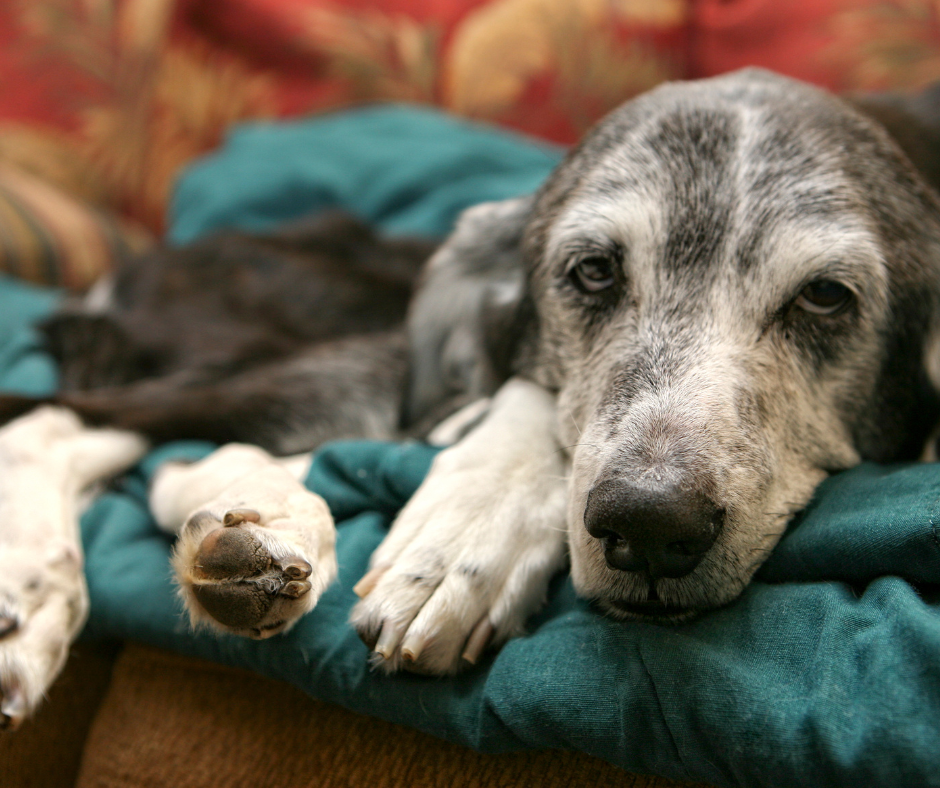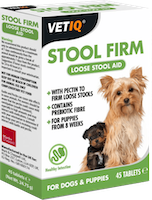No dog owner wants to think too long or hard about their pet’s diarrhoea. It’s unpleasant. Especially when an accident happens in the house and greets them with an unpleasant stench the moment they walk in the door.
However, it’s important to have an understanding of why your dog might have diarrhoea and what to do about it to help them get back to normal.
Usually, diarrhoea in dogs isn’t a big deal, and the illness will often pass on its own without any veterinary intervention. However, rarer causes of dog diarrhoea exist which will require a trip to the vet, so read up on the following causes of diarrhoea to better understand what you and your dog may be up against.
Common Causes of Diarrhoea in Dogs
The next time you find yourself realising, “My dog has diarrhoea,” understand that it could be due to:
1. Change in Diet
Often, a simple change in your dog’s diet will result in some temporary diarrhoea as your dog’s digestive system adjusts to the shock.
A change in diet may result from trying out a new food or feeding your dog “human” food or scraps from the table. Plus, we all know our dogs’ tendency to eat anything and everything—it’s always possible that gobbling something off the ground or scavenging some spoiled food from the rubbish could be giving him the runs, too.
2. Infections
Just like humans, dogs are susceptible to common viral and bacterial infections which can cause diarrhoea. Viruses such as rotavirus, parvovirus, distemper, or coronavirus are often at fault, while bacterial infections may result from pesky bugs like campylobacter, salmonella, or helicobacter.
3. Parasites
Although less common, diarrhoea in dogs may also be caused by parasitic infections due to roundworms, hookworms, tapeworms, or whipworms.
4. Stress
Do you remember the last time you were so worried about something that you ended up with a nasty stomach ache? The same can happen to dogs! Stress may cause gastrointestinal upset which leads to irritation and diarrhoea, so keep an eye on your dog’s behaviours to assess whether or not anxiety might be a cause.
What to Do About Your Dog’s Diarrhoea / How To Stop Diarrhoea in Dogs
Prevention
Of course, the best way to treat dog diarrhoea is to prevent it from happening in the first place! This won’t always be possible, but dog owners should regularly ensure that they are taking the proper health precautions. For example, lessen the risk of doggy diarrhoea by:
- Keeping an eye on what your dog gets in his mouth during outdoor playtime and walks.
- Ensuring that your rubbish bin is difficult to plunder.
- Maintaining a peaceful, happy home environment for your dog.
- Making necessary dietary changes slowly rather than all at once.
- Speaking with your vet about the best medications to prevent parasitic infections.
- Withholding food scraps and bits of human food from your dog.
- Keeping poisonous plants and other substances out of reach.
Home Remedies
Often, instances of diarrhoea in dogs are self-contained and won’t require a special trip to the veterinarian. When your dog has diarrhoea, provide him with plenty of water to avoid the risk the dehydration. Keep food from your dog for about 12 hours before offering him skinless, boneless, boiled white meat chicken and rice, which makes for a nutritious but easy-to-digest meal plan for your dog until he’s feeling better.
Stool firming medications (such as VetIQ Stool Firm) can also offer some relief.
Whatever you do, do not offer your dog medications intended for humans!
When to Visit a Vet
When evaluating whether or not you should take an impromptu visit to the vet’s office, examine your dog’s diarrhoea before disposing of it. This may not be the most glamorous task, but the appearance and consistency of your dog’s poo can tell you a lot about the possible cause.
For example, noticing white flecks within your dog’s diarrhoea can indicate a parasitic infection, while streaks of blood within the poo could mean your dog has some bleeding somewhere along his gastrointestinal tract. Black poo with a tar-like consistency may also indicate bleeding.
Any of these poo appearances should result in a vet visit, as they could be indications of a more serious condition.
You’ll also want to pay the vet a visit if you notice any of the following “red flags”:
- Lethargy (excessive exhaustion)
- Vomiting more than once
- Seizures
- Prolonged symptoms that don’t resolve after two days
- Changes in thirst and urination
Play It Safe
Finally, play it safe if your dog is very young, very old, or has a history of other medical problems. In these cases, don’t wait to visit the vet—doing so could lead to further complications.
Most of all, keep an eye on your dog until he’s feeling better! Observation during bouts of diarrhoea is absolutely critical, as you don’t want to miss a warning sign or sudden worsening of your dog’s condition. When it’s your four-legged companion’s health on the line, it’s always best to err on the side of caution until the worst is behind you.
 Stool Firm
Stool Firm
Loose Stool Aid for Dogs and Puppies
VetIQ® Stool Firm tablets are specially formulated with a unique blend of pectin and pumpkin to increase stool firmness and ensure your dog is absorbing the required nutrients.






